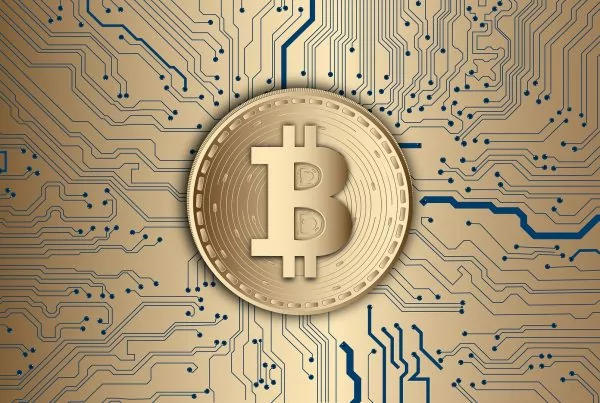
The “Insufficient Liquidity For This Trade” issue is a relatively common occurrence on Decentralized Exchange, such as Uniswap, Pancakeswap or Sushiswap.
When you encounter this error, it’s likely due to the pool’s limited capacity to facilitate your trade, due to, well, as the name says, not enough liquidity. You’ll need to take a closer look at your trade size and consider a few different ways of solving this issue. We’ll go into this in more detail in this article.
Key Takeaways
- Reduce trade size to mitigate liquidity impact and increase the likelihood of a successful transaction on Uniswap
- Increase slippage tolerance (up to 12% typically) to accommodate price fluctuations during trades with low liquidity tokens
- Verify the token being traded to prevent liquidity mismatches and ensure compatibility with Uniswap’s liquidity pools
- Explore alternative DEXes, such as SushiSwap and PancakeSwap, which may offer better liquidity for the desired trade
How AMMs (like Uniswap) work
At the core of Uniswap’s functionality lies the Automated Market Maker (AMM) model, which relies on liquidity pools to facilitate seamless token trading. When you interact with Uniswap (which has a native token, UNI), you’re essentially tapping into these pools, which contain pairs of tokens, such as ETH and USDC.
The AMM determines prices algorithmically based on the ratio of the tokens within the pool, following the constant product formula (x * y = k). This approach is at the core of decentralization because it allows for decentralized trading without traditional order books.
As you dive deeper into the matter, you realize that the depth, or size of the liquidity pool is a vital component. If you attempt to execute a trade that exceeds the pool’s capacity, it will lead to transaction failures.
In such cases, you may encounter errors like “Insufficient Liquidity For This Trade.” Uniswap’s design also allows users to actively contribute to liquidity pools and earn fees from trades executed within the pool. This is called liquidity mining, and it incentivizes participation, which improves liquidity and reduces the likelihood of such errors.
How to Fix “Insufficient Liquidity For This Trade” on Uniswap
When you encounter the “Insufficient Liquidity For This Trade” error on Uniswap, you can take a few steps to resolve the issue.
You can try reducing the trade size to minimize the impact on the liquidity pool, or increase the slippage tolerance setting to give the trade more flexibility.
Additionally, double-check that you’re trading the correct token and consider checking the token’s liquidity on other decentralized exchanges to explore alternative options.
Reduce the trade size
Reducing your trade size is the most straightforward solution to bypass the “Insufficient Liquidity For This Trade” error on Uniswap. By decreasing the amount you’re trying to swap, you lower the impact on the liquidity pool, making it more likely for your transaction to be executed successfully.
It’s simple math. If A must be less than B for a successful transaction, where A is your trade size and B is liquidity pool size, reducing the size of A is a very straightforward and logical solution.
Assess the current liquidity of a trading pair before executing transactions to be able to identify an appropriate trade size that aligns with the pool’s capacity. Reducing trade size helps decrease the likelihood of a failure due to liquidity shortages, but it also reduces potential losses from slippage during execution.
You may need to continually make adjustments to trade sizes based on fluctuations in market conditions and liquidity availability. If something worked today, it doesn’t mean it’ll work tomorrow, and vice versa. Regularly review market conditions and adjust your trade sizes accordingly.
Increase slippage tolerance setting
Your Uniswap transaction’s success may depend on a simple (but important) setting: the slippage tolerance. When you encounter the “Insufficient Liquidity For This Trade” error, consider adjusting this setting.
To do so, access your wallet, connect it to Uniswap, and select the tokens you wish to swap. Then, navigate to the transaction settings and adjust the slippage tolerance.
The default slippage tolerance is automatically set at 0.5% by Uniswap (or 0.1% in Uniswap V3), which means your trade will only get executed if the actual price is within 99.5% or 99.9% of the price you saw on your browser.
If you manually raise the slippage tolerance, you allow the transaction to execute even if the token price changes more significantly during the trade process due to low liquidity.
For transactions involving lower liquidity tokens, a slippage tolerance setting of 5% to 12% is often recommended. After making the adjustment, confirm the settings and proceed with the transaction.
Increasing the slippage tolerance can significantly reduce the chances of encountering “Insufficient Liquidity for This Trade” errors, as it provides a sort of buffer for price fluctuations.
Make sure you’re trading the correct token
This one may seem obvious, but this is crypto, and there can be lots of coins with a similar or even the same name as the coin you want to trade. Make sure that you’re trading the correct token. Double-check the token’s contract address, as a small error can result in trading a different token with low liquidity.
Also, be aware of token migrations or updates, as a token may have moved from one liquidity pool to another, affecting its available liquidity.
Of course, you should also confirm that the token you’re trading is supported by Uniswap.
Check the token’s liquidity on other DEXes
When Uniswap’s liquidity is insufficient for your trade, a quick scan of other decentralized exchanges (DEXes) can provide a viable alternative. You can check liquidity metrics on platforms like SushiSwap, TraderJoe or PancakeSwap, as they may offer better trading conditions for the same token pair.
Utilize tools like CoinGecko or CoinMarketCap to assess liquidity depth across various exchanges, helping you identify which DEX has the highest liquidity for your desired trade.
You should also examine the token’s liquidity pools on DEX aggregators like 1inch, which aggregate prices and routes from multiple platforms for optimal trading opportunities.
Also, you can check the trading volume for the token on other DEXes, as higher trading volume often correlates with better liquidity.
The bottom line
You’ve now got the tools to tackle the “Insufficient Liquidity For This Trade” error on Uniswap and other AMMs.
You should now understand how AMMs work and be able to apply the fixes – reducing trade size, increasing slippage tolerance, verifying token addresses, and exploring alternative DEXes.
FAQs
How to fix “Insufficient Liquidity For This Trade”?
To fix the “Insufficient Liquidity For This Trade” error on Uniswap or similar DEXes, you can:
- Reduce Trade Size: Lower the amount you’re trying to swap to lessen the impact on the liquidity pool.
- Increase Slippage Tolerance: Adjust the slippage tolerance setting to accommodate potential price changes during the transaction.
- Verify the Token: Make sure that you’re trading the correct token by checking its contract address.
- Explore Alternative DEXes: If Uniswap’s liquidity is insufficient, consider using other decentralized exchanges like SushiSwap, PancakeSwap, or 1inch.
What is lack of liquidity in trading?
Lack of liquidity in trading refers to a situation where there aren’t enough assets available in a market to fulfill the demand for trades at stable prices. In decentralized exchanges like Uniswap, this can occur when the liquidity pools are too small to handle large transactions. This leads to issues like the “Insufficient Liquidity For This Trade” error.
What causes lack of liquidity?
Lack of liquidity is typically caused by a small or insufficiently funded liquidity pool, where the ratio of assets within the pool cannot support larger trades.



